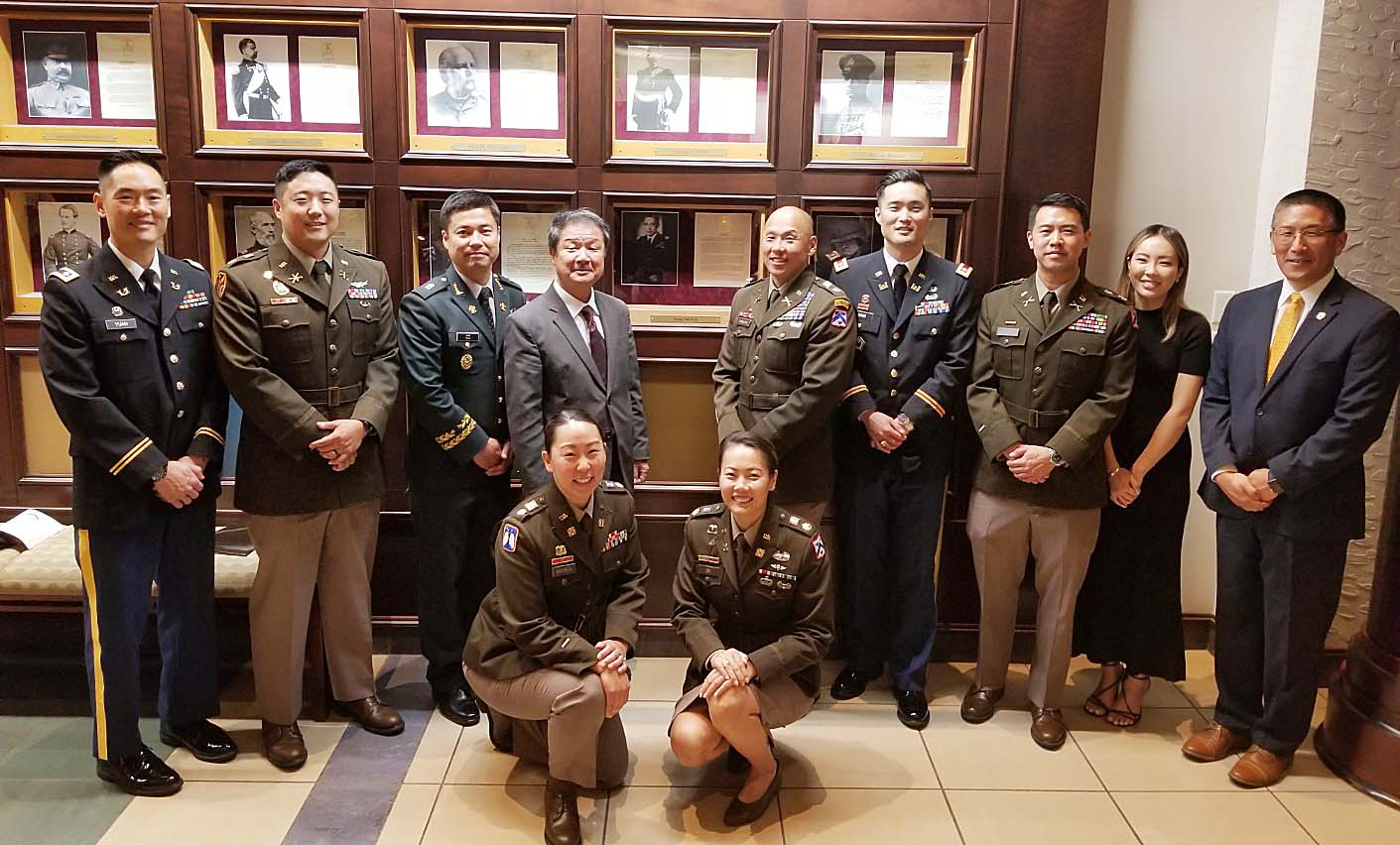
The Army’s Command and General Staff College (CGSC) at Fort Leavenworth, Kansas City, Kansas, announced on Facebook on May 16 that Colonel Young Oak Kim, a hero known for his revolutionary service during World War II and the Korean War, was inducted into the Hall of Fame at the Fort Lewis and Clark Center.
Lt. Gen. Milford H. Beagle, Jr., Commanding General at the U.S. Army Combined Arms Center and Fort Leavenworth, hosted the induction ceremony, which was attended by more than 100 senior officers, including over a dozen Korean-American officers, according to CGSC.
Dr. Edward T. Chang, who was invited to attend the ceremony as the translator of Colonel Kim’s autobiography, “Colonel Young Oak Kim, the Unnamed Hero,” introduced Colonel Kim with a video and thanked the attendees on behalf of Colonel Kim.
“Colonel Kim’s induction ceremony into the Hall of Fame, which is home to many famous American heroes, is a historic event and a source of pride for Korean-Americans in the United States,” said Dr. Chang. “It is especially heartening to see that many second-generation Korean-Americans are proud to be officers from West Point and ROTC.”
The CGSC is reportedly considering incorporating Kim’s story into its curriculum in the future.
Born in Los Angeles in 1919, Colonel Kim was a U.S. Army officer who served in World War II and the Korean War, where he was awarded the U.S. government’s Distinguished Service Cross, the Legion of Honor, the French Croix de Guerre, and the Korean Taegeuk Medal for his extraordinary heroism.
After serving in World War II, he was discharged and re-enlisted during the outbreak of the Korean War, rising through the ranks of the 31st Infantry Regiment, 7th Infantry Division, to become the first person of color in U.S. military history to command a battalion in combat. During the Korean War, he is known to have cared for more than 500 war orphans.
After his discharge in 1972, he spearheaded the founding of the Kheir Clinic, the Korean American Coalition Los Angeles (KAC), and the Korean American National Museum, dedicating his life to caring for victims of domestic violence, comfort women, and Korean American adoptees.
He passed away in December 2005 in Los Angeles and is buried at the National Memorial Cemetery of the Pacific.
The Korean-American community in Los Angeles honored Colonel Kim by naming a middle school at 6th St. and Vermont Ave. after him, calling it Young Oak Kim Academy.
The Army Command and General Staff College, which trains senior U.S. military leaders, was founded in 1881, graduated its first class in 1883, and has since trained countless officers. It is an elite course for aspiring generals, where officers at the major level and above spend up to two years learning the leadership and tactical skills required to become commanders.
Graduates of the school include Chief of Staff George Marshall during World War II, Supreme Commander Douglas MacArthur, former President Dwight Eisenhower, and former Secretary of State Colin Powell.
BY NICOLE CHANG [support@koreadaily.com]




